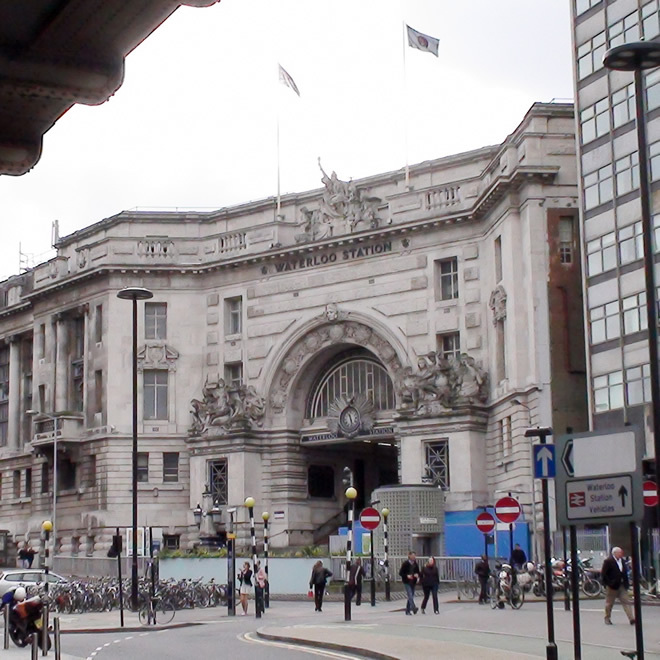{Around the arch just above the clock:}
Dedicated to the employees of the Company who fell in the war.
{On the stone medallions above:}
Belgium, Italy, Dardenelles, France, Egypt, Mesopotamia, North Sea
From the Waterloo station web site: "Waterloo is the UK's largest station, covering an area of 24.5 acres. One of its most notable features is the Victory Arch, built of Portland Stone. This commemorates the London and South Western and the Southern Railway men who gave their lives in the First and Second World Wars."
Ornamental Passions has examined all the sculpture that makes up this memorial, and it's there we learn that it "was commissioned from the firm of Brindley and Farmer and may have been carved by Charles Whiffen." British Listed Buildings is more certain: "The sculptor was the otherwise little known Charles Whiffen. The special significance of the monument within the post-First World War genre is that the LSWR staff themselves were, uniquely, consulted on its design."
Site: Waterloo Station Victory Arch & plaques (4 memorials)
SE1, Waterloo Station
Constructed 1907-22. The long station front was designed in phases by James Robb Scott. Only the Victory Arch is listed. At one time this building must have looked quite good, but now the ghastly surroundings have pretty well defeated it. View from the Mirror has an excellent post on the creation of Waterloo station as a more central terminus, an extension from Nine Elms, and another, more about this Victory Arch.
Enter the station via this arch and at the top of the steps you pass through a large entrance lobby containing all the plaques listed here, for WW1, WW2 and the D-Day 50th anniversary.
Bonus fact: Waterloo Station is named after the bridge, which was opened in 1817, 2 years after the battle.













Comments are provided by Facebook, please ensure you are signed in here to see them